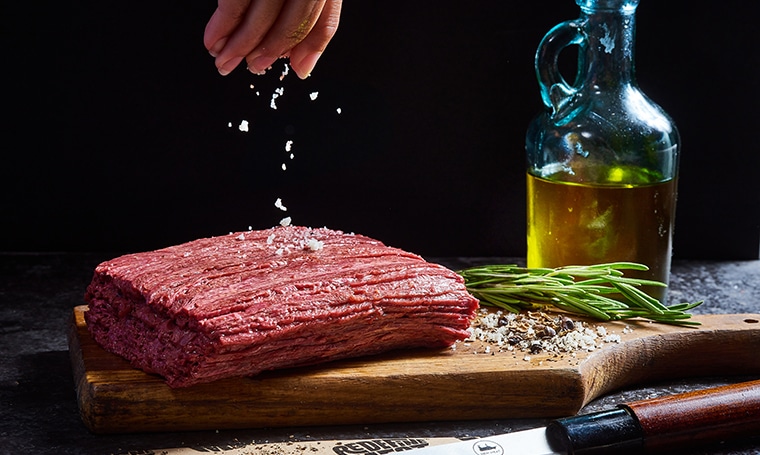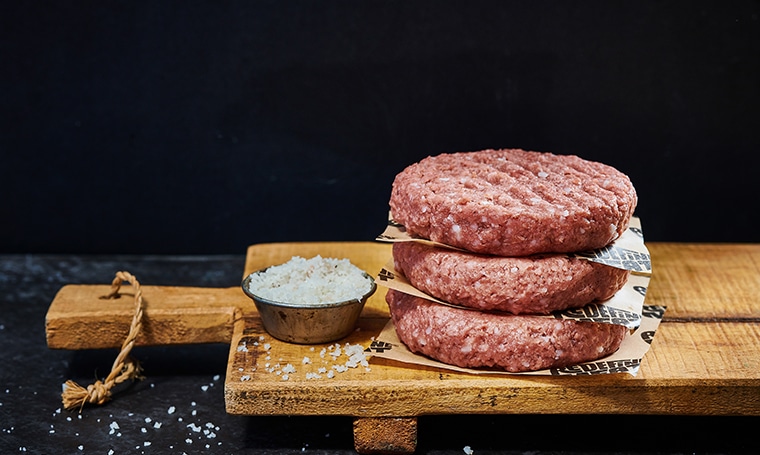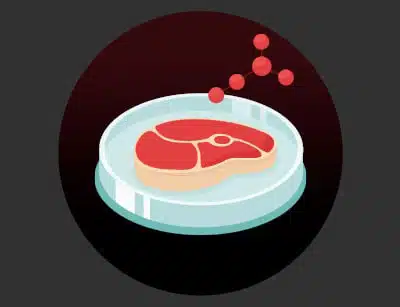
Sodium in meat: balancing taste and nutrition at Redefine Meat
Sodium, commonly found in salt, is a fundamental component of our diet and essential for vital bodily functions. However, the presence of sodium in the foods we buy at grocery store, and our historical affinity for salt as a civilization, have led to concerns about excessive sodium intake and its impact on health. In this blog, we delve into the fascinating world of salt, its role in meat products, and how Redefine Meat balances flavor and nutrition in non-animal new-meat.

Human’s love affair with sodium goes back a long way
When one thinks of salt, or sodium chloride, and about the intake of salt in our diets, one tends to think of it as a relatively modern phenomenon, linked with the rise of processed foods. But historians tell us salt has been a cornerstone of our culinary practices for thousands of years, thanks to the discovery of salt’s ability to both preserve foods (think cured meat and salted fish) and to enhance their taste. Schoolchildren are taught that salt was so valuable in ancient times that Roman soldiers were partially compensated with it, giving rise to the term “salary.”
The Delicate Role of Salt (or Sodium) in Health
With so much focus on reducing salt in our diets, it’s easy to lose sight of why salt matters. Sodium is vital to our wellbeing and plays an important role in conducting nerve impulses, muscle functions, and maintaining fluid balance within our bodies. When we sweat, we lose electrolytes, and since salt contains two key electrolytes — sodium and chloride — we need to keep our body’s salt reserves replenished.
However, for most people –those of us who aren’t running marathons on a daily basis—it’s not a lack of sodium but rather an excess of salt that poses a health risk. As you’ll recall from your high school biology classes, sodium attracts water (osmotic effect, anyone?) A high-sodium diet draws water into the bloodstream, which increases the volume of blood and raises blood pressure. Thus, consuming too much salt can increase hypertension and cardiovascular disease, which can lead to a stroke and heart attack.
Due to this dietary concern, governments and NGOs have led the food industry to reduce the salt content in many products. For instance, consumers in Israel may be familiar with the Ministry of Health’s red food labels that indicate products with high sodium content (over 400 mg/100 g.)
So, what quantity of salt should we be consuming for optimal nutrition? The FDA’s recommended limit is 2,300 mg/day (equivalent to roughly one teaspoon of table salt.) Americans consume an average of 3,400 mg of sodium per day. It’s also considerably more than the estimated 500 mg of sodium we need daily for our vital bodily functions.
Those who just did the math might well be asking: so why do we need the other 1,800 mg? Good question. But you might already know the answer: taste.

The Salt and Meat Connection
As a species, we enjoy –no, love– salty foods. (Research shows our forebearers have added it to their meals for at least 4,000 years.) Simply put, salt enhances the flavors of various food types and dishes, making them more palatable and enjoyable.
How much sodium does meat contain? The amount of sodium in meat products depends on a variety of factors. Among other roles, sodium plays a crucial role in improving texture, juiciness, and overall sensory appeal of meat products, among others.
Salt does more than just add saltiness to food. It actually enhances the thickness and sweetness of foods and masks off-flavors, making the overall flavor more intense. Sodium in meat is no different. Just think what happens when you sprinkle salt into a bowl of bland vegetable soup!

What about Sodium in Redefine Meat Products?
At Redefine Meat, we’re passionate about creating new-meat has the all-around sensory appeal of traditional meat, with an ingredient list that promotes health and wellbeing. As food makers and food lovers, we are the first to recognize the vital role salt plays as a flavor enhancer; we want our consumers to find our new-meat portfolio to be delicious.
However, we also believe ‘delicious’ and ‘nutritious’ should go hand in hand. Like many food producers, we must navigate what is known as the salt-taste challenge. As consumers, we are so acclimated to relatively high levels of salt in the foods we buy, that if the sense of saltiness is not present in the right amounts, we instantly find foods unpalatable.

In addition, we must keep in mind that we are catering to the taste of different types of consumers in different settings – from fine dining restaurants to street food, and from mixed-dietary households, to corporate cafeterias.
Here are several strategies we employ to ensure our new meat products are both good to eat and good for the health of our consumers.
- Sodium Reduction Regulations: From our whole-muscle cuts to our burgers, sausages, and kababs, all our products meet sodium reduction regulations, ensuring that they contain lower levels of salt than many traditional meat options. For example, Redefine Meat products contain under 400 mg of sodium per 100 grams of product, and therefore aren’t given the “red label” in Israel.
- Balancing taste without adding salt: We employ various strategies in our recipes to create plant-based meat products that are low in salt and still offer a delightful meaty sensory experience. For example, to enhance the taste and elevate the overall flavor profile of our products, we incorporate custom-made spice and seasoning blends that are low in sodium but high in flavor. And we constantly check that we’re hitting the mark in using our sensory panels with a broad range of consumers.
- Collaboration with nutritionists: We do this on a regular basis, to set specific salt reduction targets, track progress over time, and align with dietary guidelines for sodium intake.
At Redefine Meat, we are proud to be at the forefront of food innovation, crafting plant-based meat products that redefine the boundaries of taste, nutrition, and health. Thanks to our commitment to balancing flavor while reducing sodium content, we ensure our consumers can enjoy the best of both worlds, –a delicious and good-for-you product—bite after meaty bite.





